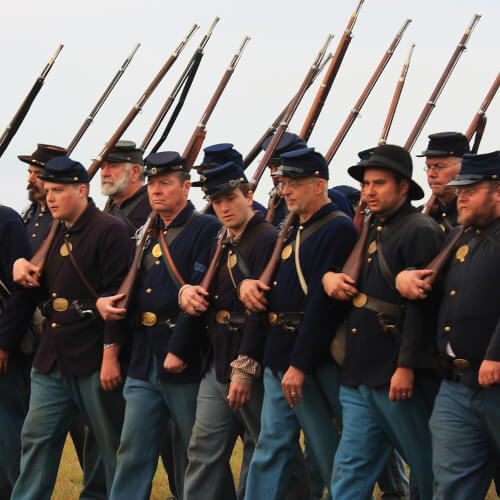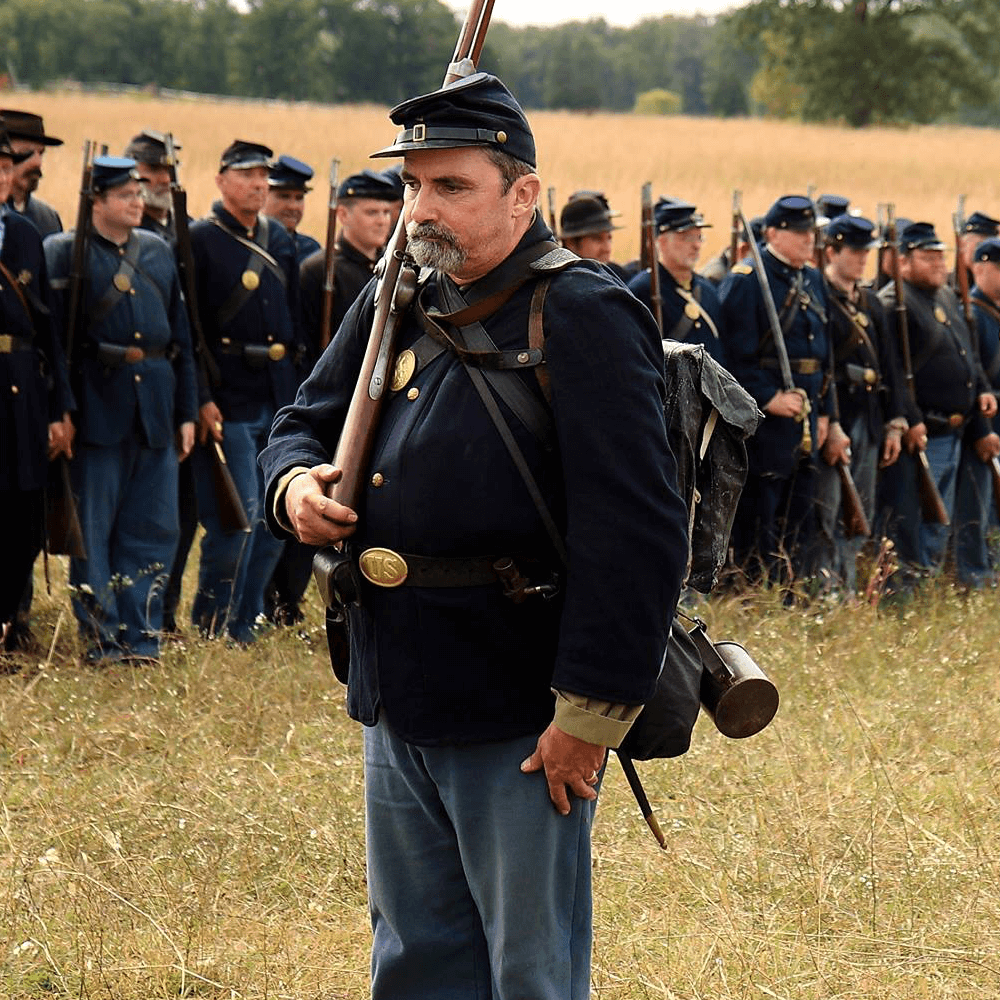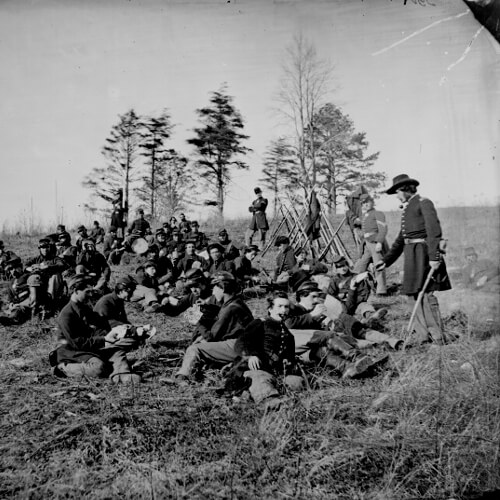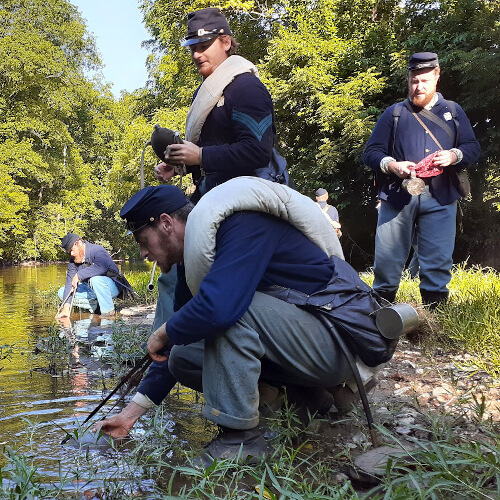Civil War Soldiers
Learning About The Common Soldier of the Civil WarThe Common Union Soldier
The Civil War saw men from all walks of life take up arms to fight for the Union. For many, leaving home to join the military would be the first time they had been more than a few miles from home. These new recruits would soon learn the hardships and monotony of military life. They would also learn about disease, poorly cooked food, and poor sanitation.
Soldiers by the Numbers
Historians estimate that the number of Union soldiers to be around two million, most of which were volunteers. These volunteers, who were young and filled with pride and patriotism, flocked to the recruiting stations to put down the rebellion. They came from all walks of life, different races and even immigrants to join the fight. Over 500,000 Union soldiers were German, while nearly 200,000 were Irish along with other European countries, these men made up the Union army. By 1865, African-American soldiers made up about 10 percent, or 180,000 troops, of the Union army
Occupations
Coming from different backgrounds also helped the army in different ways. Prior to volunteering, these soldiers had been farmers, railroad workers, miners, and mill workers. Union muster rolls contained references to over 300 different careers. These skills allowed the soldiers to help build and repair equipment while in camp or on the march.
Soldiers Were Young
According to historians, the average Civil War soldier was between the ages of 18 and 29, weighed about 140 pounds and was 5’ 8” tall. He was also a single native-born white male farmer. While most Union soldiers had some education, there was also a large gap in schooling. Some soldiers could neither read nor write while others had college degrees.
Hardtack life
In the Union army, about 80% of the soldiers were in the infantry and were paid $13 per month. Life as a soldier was dangerous. For every 1,000 soldiers about 112 would be wounded and they had a one in eight chance of dying due to disease and a one in 18 chance of dying in battle. In total, about 360,00 men died fighting for the Union.
Additional Information
Rations
Contrary to what you might think, Union soldiers were pretty well fed. Soldiers would be issued either marching or camp rations. For soldiers on the march, they would receive 16 ounces of hardtack and either a pound of salted beef or 12 ounces of salted pork along with salt, sugar and coffee. While in camp, soldiers would receive soft bread in lieu of hardtack, flour or cornmeal and other items such as dried vegetables, rice and molasses. Soldiers often grouped themselves into a “mess” to combine and share rations, often with one soldier selected as cook or split duty between he and another man.
Religion
There is no question that both sides of the fighting felt the God was on their side and religion played a major role in the lives of many soldiers. According to author Allen Guelzo, there were about 52,000 congregations in the United States in 1860. Typically a soldier’s regular routine included something related to their faith including attending church services, praying, or reading bible verses. Many units had chaplains that helped not only with spiritual needs but in other ways throughout the camp. One chaplain, Father William Corby of the famed Irish Brigade, gave absolution to his soldiers on July 2, 1863, before the brigade went off to fight in Gettysburg.
African-American Soldiers
According to the National Archives, by 1865, approximately 180,000 African-American men were soldiers in the Union army with 80 of them being commissioned officers. This accounted for about 10% of the army and did not include about 20,000 who served in the Navy. Of these brave men, nearly 40,000 died, mostly from disease. These soldiers served in both the infantry and artillery and performed a variety of support functions for the army. According to the National Archives, “Black carpenters, chaplains, cooks, guards, laborers, nurses, scouts, spies, steamboat pilots, surgeons, and teamsters also contributed to the war cause.”
Lodging
During the campaign season, Union camps were temporary and were large canvas tent cities there were organized into company “streets.” In the winter months, soldiers would build more permanent winter quarters made from logs and other materials. These structures were designed to house several men and to protect them from the harsh elements. In the summer, soldiers would sleep in tents. These tents were nothing more than a six-foot rectangle of canvas that was draped over a line or pole and then staked to the ground.
Learn More
Videos
Vocabulary
Bivouac: a temporary camp without tents or cover, used especially by soldiers or mountaineers.
Canvas: a strong, coarse unbleached cloth made from hemp, flax, cotton, or a similar yarn,
Campaign: a series of military operations intended to achieve a particular objective, confined to a particular area, or involving a specified type of fighting.
Forage: search widely for food or provisions.
Infantry: an army unit consisting of soldiers who fight on foot
Salt Pork: – fat from the back and sides and belly of a hog carcass cured with salt




